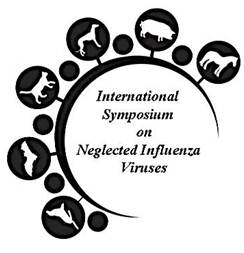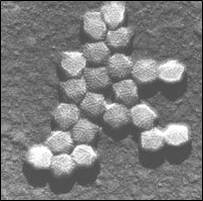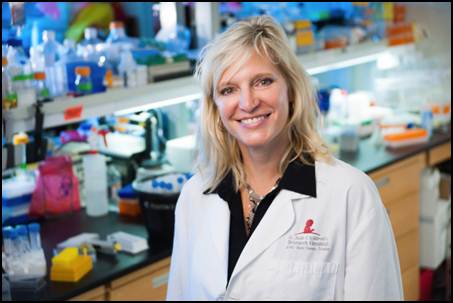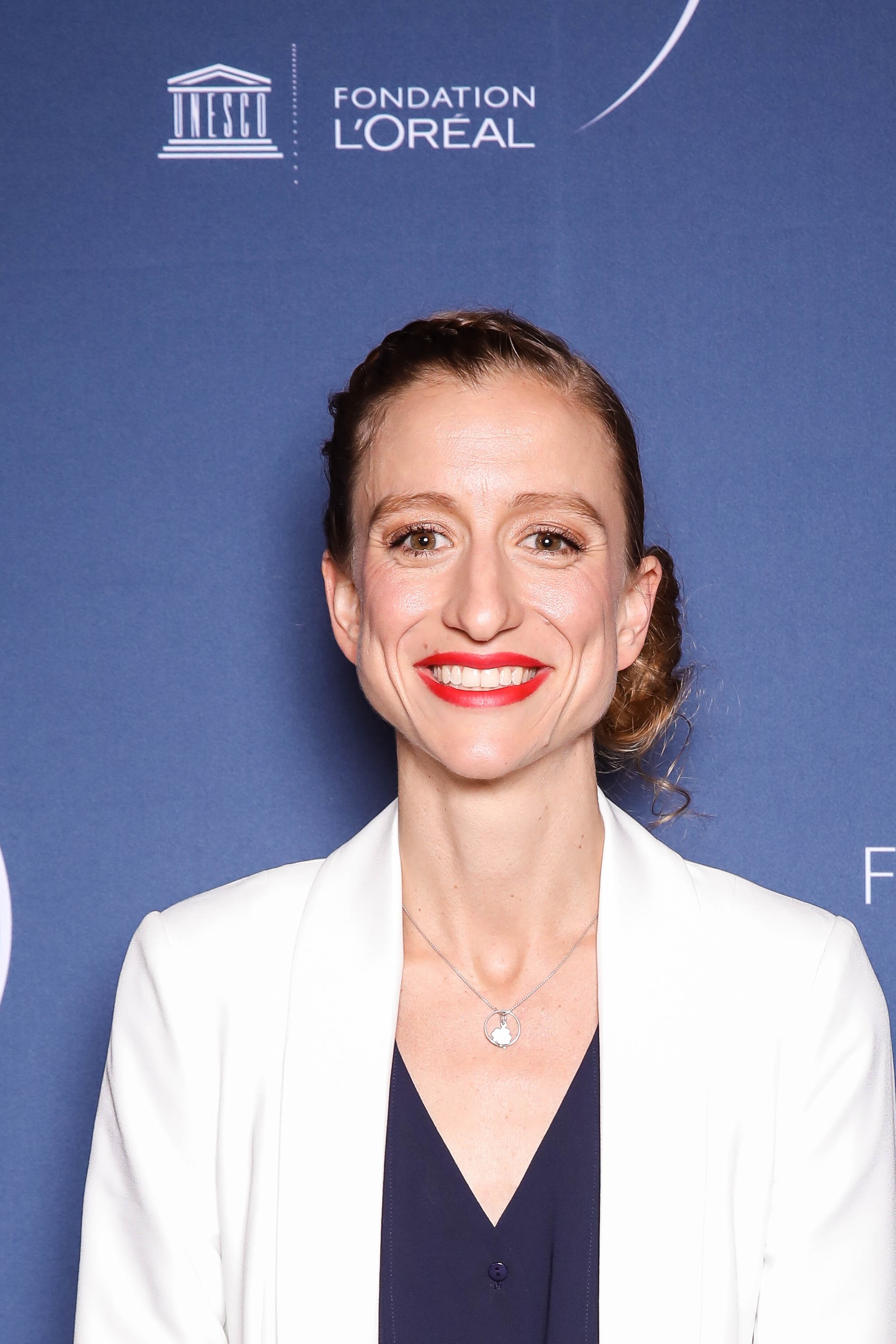
April 2015
In this issue
Measles outbreak in US
Development of an RSV vaccine
Highly pathogenic avian influenza arrives in North America
Meet a Board Member
In the know
Upcoming meetings
Workshop on Next Generation Sequencing of Viruses
Institut Pasteur, Paris, France
20 – 21 May 2015

(c) Institut Pasteur
This expert workshop, organised by the AVG in conjunction with GISAID and PREDEMICS, will focus on the analysis and interpretation of Next Generation Sequencing (NGS) data for influenza and other viruses, with a particular emphasis on the significance of minor variants within a virus population and their potential emergence. It will include discussions relating to sequencing technologies, data processing (quality control. Mapping), assembly and analysis of data, database format, interpretation and the significance and use of NGS data for public and animal health.
Submissions of abstracts for oral or poster presentations are welcome; deadline 20th April 2015.
For more information click here or visit the registration page
4th AVG-isirv Conference

Early bird registration extended till 10 April 2015.
For more information click here or visit the registration page
In the news
Measles outbreak originating in Disneyland, California, USA
Measles is a respiratory disease caused by a Paramyxovirus. Disease is characterized by fever, cough, runny nose, and a red, flat rash. Measles is extremely contagious, and symptoms generally last 7-10 days. However, severe complications can occur including pneumonia, blindness, and encephalitis. Most children in developed countries receive the MMR vaccine as a routine measure of protection. Because of this, measles has been mostly eradicated in the United States until a recent epidemic.
On 5 January 2015, an 11 year old patient with measles was reported in California. The patient had been to Disneyland in late December, and soon after other cases were reported, some of which were people who had been visiting Disneyland during the same time frame. As of 27 March 2015, a total of 146 cases have been reported. Of those people, almost half of them were unvaccinated due to extremely young age or personal beliefs.

cdc.gov
Spotlight on RSV: Towards an efficacious vaccine with Julia Hurwitz

Julia Hurwitz
St Jude Children's Research Hospital
photo courtesy SJCRH
Young children can die from RSV infections. In fact RSV kills close to 200,000 children worldwide each year, and about 500 of these children are in the United States. There are more than 50,000 hospitalizations for RSV among young children each year in the US and about 2 million outpatient visits. Most children recover fully from RSV infections, but there can sometimes be dangerous lasting effects such as asthma. Few people know much about RSV, except for the children who suffer serious infections, along with their families and their health care providers.
The first exposure to RSV is the most serious. Subsequent infections are usually not so severe. This is because the child’s immune system is primed during his or her first RSV exposure. The immune system then helps protect the child when a second RSV exposure occurs. And the immune system can do a great job once it’s activated! Our goal is to activate the immune system by a safe method before a child is naturally exposed to RSV.
There is one product that is already available to protect children from RSV. This is Synagis (Palivizumab), a monoclonal antibody. It is used as prophylaxis for infants who are at high risk for serious RSV infections due to low birth weight or heart-lung problems. But monoclonal antibodies are expensive and are not available to many of the children who need them most. Whether or not Synagis can also serve as a beneficial treatment after a child is hospitalized with RSV is a topic of debate among clinicians. In any case, there is a clear need for better treatment options for children who are hospitalized with disease caused by RSV.
What about a vaccine? RSV vaccines have been studied for more than 50 years. A successful RSV vaccine should safely induce a strong neutralizing antibody response in children. Several strategies are being tried and are in various stages of pre-clinical and clinical development, but there is no product that has passed all clinical safety and efficacy tests as of yet.
Our RSV vaccine candidate has many attractive features. We use Sendai virus, because it induces a strong neutralizing antibody response, and also induces a CD8-positive T cell response that can act as a second line of defense against virus. We tested our vaccine for the induction of protective immune responses in laboratory experiments with success. We’ve now finished manufacturing the vaccine in the Children’s GMP LLC facility on the St. Jude campus and we are very excited about future clinical studies. We hope that our vaccine will be successful in the clinic so that it can then be licensed to protect children worldwide from the morbidity and mortality caused by RSV.
.
Highly Pathogenic avian influenza arrives in North America
From Dr Robert Webster: “It took a long time for H5 to get to the US. Millions of birds migrate from Siberia/China to the US every year – H5 never made it. Wild birds can transmit to chickens in China...but not in the US? The theory was that wild birds weren’t involved in continent to continent transmission. Now that theory is blown. It’s a bloody disaster for the poultry industry. Backyard flocks are vulnerable to infection too. I don’t know how they’ll keep this virus out of the poultry industry. Spread into Mexico is also a huge worry.
It’s really surprising that the press hasn’t given this a lot of attention. We need to alert the agricultural community. This is a missed opportunity to educate the public, protect the hugely valuable poultry industry. Chicken is the main cheap protein source. If chicken came off the market in the US there would be huge repercussions.”
As for his thoughts on the current H5 research moratorium, “It’s another bloody disaster. This needs to be resolved as quickly as possible. It inhibits necessary studies to sort out things like this!”

Robert Webster, PhD
St Jude Children's Research Hospital
photo courtesy SJCRH
Meet an isirv board member

Lance Jennings
QSO, PhD, FRCPath, FFSc (RCPA)
Chair of isirv
How did you get to where you are today?
I gained my education in Christchurch and Dunedin, New Zealand, completing a PhD at the University of Otago in 1976, on the epidemiology of respiratory viruses among families in the small community of Port Chalmers. Although this period in my life was a balance between the mountains; mountaineering and alpine guiding during the summer holidays and skiing during the winter, completion of my PhD became a priority, ahead of other international climbing opportunities.
Post-doctoral experience was gained both in the United Kingdom and the United States. Research within the Public Health Laboratory at Withington Hospital, Manchester and the Beatson Institute in Glasgow, involved the application of early DNA methods to the investigation of the association of common viruses with senile dementia. Following this, a period at the State Hygiene Lab, University of Wisconsin (UW) in Madison, USA, brought me back into respiratory virology. I joined Elliot Dick’s Antarctic Research Team and spent the “Winter-fly-in” periods of 1979 and 1980 at McMurdo Station, Antarctica, trialing iodine impregnated virucidal tissues for the interruption of transmission of respiratory virus infections. The “Antarctic Hut” model evolved out of this work and volunteer UW student were used to study the transmission of Rhinovirus 16 colds. This model clearly demonstrated the importance of aerosol transmission of rhinovirus 16 colds, and the limited role of hand to hand transmission. It is pleasing to see that these models are now, after some 30 years, being applied to understanding the transmission of influenza viruses.
Returning to Christchurch in 1979 to establish a diagnostic virology service, I became increasingly aware of the importance of influenza surveillance and the use of the information collected for public health purposes. This has lead in New Zealand to the introduction of Government funded influenza vaccine, along with pandemic preparedness planning and influenza awareness education, and in the Asia-Pacific region, the formation of the Asian-Pacific Alliance for the Control of Influenza (APACI).
What got you interested in studying influenza?
Serendipity! During the first year of my PhD study in Port Chalmers, an influenza epidemic occurred. The influenza A viruses isolated were forwarded to Mill Hill and shown to be representative the second significant antigenic drift occurring to the A/Hong Kong/68 (H3N2) virus and Influenza A/Port Chalmers/1/73(H3N2) was accepted as the prototype strain. This virus caused substantial mortality, especially in North America over 1973/74 influenza season and gained a lot of media attention. Then, while working in the UK, regular trips to the Common Cold Research Unit to attend the Salisbury Plains Virology Group meetings provided an opportunity to meet some of the fathers of influenza and respiratory virology in the UK, while Norman Grist in Glasgow instilled a passion for clinical virology.
What is your favorite part about being involved in isirv?
Participation in international professional organizations has a number of benefits ranging from the sharing of information and education to keeping in touch with colleagues. Isirv is a particularly special organization though. It was conceived out of a need for an independent, scientifically based organization in the face of significant epidemiologic events of the emergence of SARS and spread of Influenza (H5N1) and to provide a permanent home for the “Options” meeting. It is steadily establishing itself as the leading organization for those interested in influenza and other respiratory viruses globally. I am not sure if I have a “favorite part about being involved?” Perhaps it is just being able to play and active roll (albeit small) in isirv’s evolution and help chart a course which maintains the organization’s independence and transparency while ensuring it’s activities are sustainable. An organization that future young scientists will want to be a part of.
In the know
Publications of interest to isirv members
Karlsson, E, et al. Visualizing real-time influenza virus infection, transmission, and protection in ferrets. Nat Commun. 2015 Mar 6;6:6378.
Li, Q, et al. Epidemiology of human infections with avian influenza A (H7N9) virus in China. N Engl J Med. 2014 Feb 6;370(6):520-32.
Oshansky, CM, et al. Mucosal immune responses predict clinical outcomes during influenza infection independently of age and viral load. Am J Respir Crit Care Med. 2014 Feb 15;189(4):449-62.
Pflug, A, et al. Structure of influenza A polymerase bound to the viral RNA reporter. Nature. 2014 Dec 18;516(7531):355-60.
Reich, S, et al. Structural insight into cap-snatching and RNA synthesis by influenza polymerase. Nature. 2014 Dec 18;516(7531):360-66.
Spann, KM, et al. Viral and host factors determine innate immune responses in airway epithelial cells from children with wheeze and atopy. Thorax. 2014 Oct;69(10):918-25.
Wurzel, DF, et al. Adenovirus species C is associated with chronic suppurative lung diseases in children. Clin Infect Dis. 2014 Jul 1;59(1):34-40.
Zomer-Kooijker, K, et al. Decreased lung function precedes severe respiratory syncytial virus infection and post-respiratory syncytial virus wheeze in term infants. Eur Respir J. 2014 Sep;44(3):666-74.
Submissions welcome
The isirv board would like to broaden the society’s reach to be of greatest interest to current and/or potential isirv members, and we’d like your ideas for future events and newsletter articles. Is there an article you’d like to submit to the newsletter? Do you have an idea for a meeting or satellite symposium? What are the most pressing issues in respiratory viral diseases? Please send your thoughts to contact@isirv.org!
Back to My Account

December 2014
In this issue
Gain of Function Moratorium
Spotlight on Respiratory Adenovirus Outbreak in China
Enterovirus D-68 Update
Meet a Board Member
In the know
Upcoming meetings
3rd International Symposium on Neglected Influenza Viruses
University of Georgia, Athens, GA, USA
15 – 17 April 2015

This meeting will build on the success of the first two meetings held in Florida (2010) and Dublin (2013). This conference will explore the latest surveillance data, vaccination and control strategies, diagnostic techniques, experimental research data, and epidemiological and economic impact studies relating to swine, canine, and other non-human/non-avian influenza viruses. For more information, click here or visit the registration page.
Coming soon – save the date!
Options IX for the Control of Influenza
Sheraton Hotel & Towers, Chicago, Illinois, USA
25 – 28 August 2016
4th isirv-Antiviral Group Conference
The University of Texas at Austin, Texas, USA 2 – 4 June 2015
Novel Antiviral Therapies for Influenza and Other Respiratory Viruses: Bench to Bedside
For more information click here
1st International Meeting on Respiratory Pathogens
Furama Riverfront, Singapore 2 – 4 September 2015
For more information click here
In the news
Gain of function research moratorium announced in US
On 17 October 2014, the US government announced a moratorium on gain-of-function studies involving influenza, SARS, MERS-CoV that could increase the pathogenicity and/or transmissibility of these viruses in mammals. During this pause of funding, the government will assess the risks and benefits of such studies and will develop a new federal policy regarding funding and execution of this research in the United States.
To see the GOF Research Moratorium announcement from the White House, click here.
To read the NIH director’s statement regarding the moratorium, click here.
Spotlight on: Respiratory Adenovirus in China
Human adenoviruses (HAdVs) are dangerous pathogens in immune-compromised patients and a frequent cause of outbreaks of acute respiratory disease among children and young adults, often resulting in life-threatening pneumonia. Patients typically report flu-like symptoms on onset of illness, such as fever, headache, sore throat, cough and little sputum. Now, HAdV-B55 has gained increasing attention, since this virus is emerging as a highly virulent pathogen for acute adenoviral pneumonia among immunocompetent adults from a community in China. Genomic recombination is an important mechanism driving HAdV evolution and conferring changes in pathogenicity. Full genome analysis has revealed that HAdV-B55 is a Trojan horse, containing a genome resulting from a recombination which provides the antibody epitope of a renal pathogen, HAdV-B11, and confers the cell tropism, biological, and pathogenicity properties of HAdV-B14, a respiratory pathogen. Therefore, HAdV-B55 is a striking example in which the emergence of a novel recombinant virus allows subversion of herd immunity.
Six cases of HAdV-B55 have progressed to acute respiratory distress syndrome (ARDS). To date, there are no approved antivirals for adenovirus treatment; ribavirin, acyclovir and ganciclovir are proven largely ineffective in treatment of serious adenoviral infections. Although intravenous cidofovir, a nucleoside phosphonate analog, has become the standard treatment for most immunocompromised patients with adenovirus disease, its use is associated with nephrotoxicity and neutropenia. The most promising anti-adenovirus antiviral in clinical development is the orally administered, lipid ester derivative of cidofovir, designated CMX001(or brincidofovir). CMX001 has several advantages compared with cidofovir, most importantly a lower risk of nephrotoxicity during clinical use. Although life-threatening adenovirus pneumonia in healthy adults remains uncommon, the diagnosis should be considered early in the course of illness to apply supportive measures in the ICU to improve patient outcome. It is difficult to discern HAdV pneumonia from other causative agents of respiratory disease, therefore viral etiology determination and a good surveillance system is of utmost importance.

EM image of adenovirus
courtesy of National Institute of Biological Standards and Control,
United Kingdom
For a clinical overview of adenovirus, click here.
Want more information on CMX001? Press release from Chimerix, Inc
Enterovirus D68 update
A recent epidemic of enterovirus D68 (EV-D68), a non-polio enterovirus, has been reported across the North America. Cases have been reported in 32 US states as well as in British Columbia, Canada. EV-D68 causes symptoms similar to the common cold, such as runny nose, fever, body aches, but can also results in more severe symptoms such as difficulty breathing, wheezing, rashes, and paralysis. More severe symptoms can especially manifest in children with a history of asthma. The virus spreads through saliva and mucus and transmission occurs through contaminated surfaces. There is no vaccine, and severely infected patients must be treated with fluids, oxygen, and respiratory therapies to keep the airway open and functioning. EV-D68 lasts approximately one week. At press time, there have been 11 fatal pediatric cases and no adult infections reported by the Centers for Disease Control, Atlanta, GA.
Only 3% of enteroviruses are associated with respiratory infections. For more information visit CDC.gov.

Jon McCullers
Le Bonheur Children’s Hospital
photo courtesy SJCRH
On the front lines: Jon McCullers, MD, Le Bonheur Children’s Hospital, Memphis, TN, USA “We have seen a number of cases of EV-D68, but do not have a clear idea of how many as we do not test regularly, since there are not definitive antiviral treatments. Some of these patients have been quite ill, including a current patient in our Pediatric Intensive Care Unit, but all have recovered with appropriate support and care. We expect to continue to see this virus or other variants of enterovirus this winter and in coming years, and are well prepared to deal with it as the care is really not different from other severe respiratory viral infections of childhood, which we see quite frequently.”
Meet an isirv board member

Stacey Schultz-Cherry
St Jude Children’s Research Hospital
photo courtesy SJCRH
How did you get to where you are today?
My dad told me he wouldn’t pay for college unless I was a science major. Really I got here by not listening to anyone’s advice. In undergrad, people said I’d never go to grad school because I had bad grades and I couldn’t write. But in grad school I finished in 3½ years with two kids! After grad school, I wanted to switch fields from cell biology to virology, and I did. But six months into my post-doc my advisor left to be dean of the grad school. While trying to figure out what to do I gave a talk and was asked to apply to a job at USDA/Southeast Poultry. I really wanted to go into academics but I was worried about not getting to see my kids grow up so I took the job. A few years later I gave a talk at the University of Wisconsin-Madison and was offered a job. I became a tenured professor of virology until I came to St Jude Children’s Research Hospital to give a talk….got another job offer. I’ve been at St Jude for 5 years and I love it!
Why influenza?
I actually didn’t want to do flu at first – I wanted to do papillomavirus. But the papillomavirus lab used a hair cell model in chickens. I did NOT want to do chickens. As I said I wanted out of cell biology, but I wanted to apply my cell biology background to virology, in a simple enough way that I could explain what I was doing to my grandma. So I interviewed with the Henshaw lab and they worked on apoptosis induction by flu. But, guess what? They snuck in those chickens and I was working on them anyway!
Why did you get involved with isirv?
Mostly because it’s a great group of people who are very committed to serving the influenza (and other respiratory viruses, of course) community. They have a great journal and it’s a good way to get everyone together, network, and get to know people outside of your particular virus group. They also organize wonderful meetings. I was involved in the organization of last year’s Options meeting in Cape Town and we’re currently organizing the Neglected Influenza Viruses meeting in Athens, GA in 2015.
In the know
Publications of interest to isirv members
Arabi YM, Arifi AA, Balkhy HH, Najm H, Aldawood AS, Ghabashi A, Hawa H, Alothman A, Khaldi A, Al Raiy B. Clinical course and outcomes of critically ill patients with Middle East respiratory syndrome coronavirus infection. Ann Intern Med. 2014 Mar 18; 160(6): 389-97.
Boyoglu-Barnum S, Chirkova T, Todd SO, Barnum TR, Gaston KA, Jorquera P, Haynes LM, Tripp RA, Moore ML, Anderson LJ. Prophylaxis with a respiratory syncytial virus (RSV) anti-G protein monoclonal antibody shifts the adaptive immune response to RSV rA2-line19F infection from Th2 to Th1 in BALB/c mice. J Virol 2014 Sep; 88(18): 10569-83.
Gralinski LE, Baric RS. Molecular pathology of emerging coronavirus infections. J Pathol. 2014 Oct 1. Doi: 10.1002/path.4454. (epub ahead of print)
Karlsson EA, Ip HS, Hall JS, Yoon SW, Johnson J, Beck MA, Webby RJ, Schultz-Cherry S. Respiratory transmission of an avian H3N8 influenza virus isolated from a harbour seal. Nat Commun. 2014 Sep 3; 5:4791.
Langlois RA, Albrecht RA, Kimble B, Sutton T, Shapiro JS, Finch C, Angel M, Chua MA, Gonzalez-Reiche AS, Xu K, Perez D, Garcia-Sastre A, tenOever BR. MicroRNA-based strategy to mitigate the risk of gain-of-function influenza studies. Nat Biotechnol 2013 Sep; 31(9): 844-7.
Meliopoulos VA, Karlsson EA, Kercher L, Cline T, Freiden P, Duan S, Vogel P, Webby RJ, Guan Y, Peiris M, Thomas PG, Schultz-Cherry S. Human H7N9 and H5N1 influenza viruses differ in induction of cytokines and tissue tropism. J Virol 2014 Nov 15; 88(22) 12982-91.
Moore IN, Lamirande EW, Paskel M, Donahue D, Qin J, Subbarao K. Severity of clinical disease and pathology in ferrets experimentally infected with influenza viruses is influenced by inoculum volume. J Virol 2014, Dec 1: 88(23): 13879-91.
Submissions welcome
The isirv board would like to broaden the society’s reach to be of greatest interest to current and/or potential isirv members, and we’d like your ideas for future events and newsletter articles. Is there an article you’d like to submit to the newsletter? Do you have an idea for a meeting or satellite symposium? What are the most pressing issues in respiratory viral diseases? Please send your thoughts to contact@isirv.org!
| ISIRV AWARDS: Geoffrey Schild Award 2020 Dr Kirsty Short |
 |
Dr. Kirsty Short is an ARC DECRA research fellow and head of the viral pathogenesis lab at the School of Chemistry and Molecular Biosciences, The University of Queensland. She completed a PhD in 2013 at the Department of Microbiology and Immunology at the University of Melbourne. In 2013 she was also awarded an NHMRC CJ Martin Early Career Fellowship to go to the Netherlands to work in the Department of Virosciences at Erasmus Medical Centre. She returned to Australia at the end of 2015 to work at the University of Queensland. In 2017 she established her own independent research group studying influenza virus pathogenesis. Her group works on many different aspects of the influenza including how the influenza virus affects different animal species, the role of the immune system in severe influenza virus infections and the interactions between severe influenza and chronic medical conditions such as diabetes and obesity. Recently, their group has begun work with SARS-CoV-2 with a particular focus on the development of novel therapies and reducing disease severity in patients living with diabetes. |
|
ISIRV AWARDS The Geoffrey Schild Award |
|
||
| ISIRV AWARDS: Geoffrey Schild Award 2020 Dr Raffael Nachbagauer |
|
|
Dr. Raffael Nachbagauer is currently an Assistant Professor in the Department of Microbiology at the Icahn School of Medicine at Mount Sinai in New York. After completing his medical studies at the Medical University of Vienna in 2013, Dr. Nachbagauer worked in the laboratories of Florian Krammer and Peter Palese at Mount Sinai towards his PhD degree which he defended in 2016 at the University of Vienna. In 2017, he was promoted to Research Assistant Professor, followed by a promotion to an independent tenure track position in 2019. His research at Mount Sinai focuses on the immune responses to viral infections and vaccinations, as well as the development of vaccines and monoclonal antibody therapeutics. As part of his research, Dr. Nachbagauer worked on the preclinical development and subsequent clinical trials for novel, broadly protective influenza virus vaccines. Another major research focus of his is to identify new correlates of protection against influenza virus infection, which will provide better predictive values and aid the further development of next generation vaccines. During his research career, he has authored and co-authored over 50 peer-reviewed articles. |

